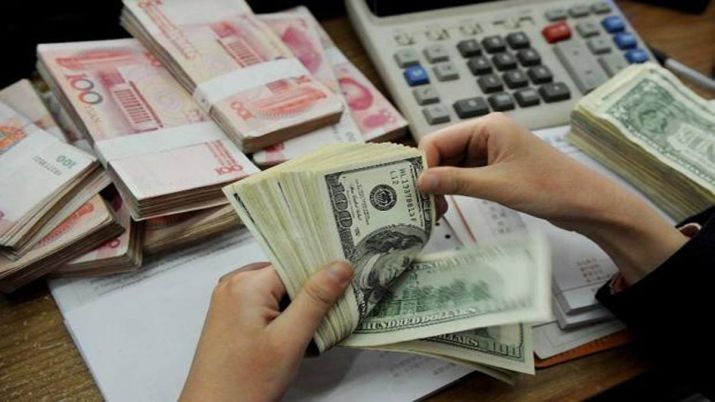
India’s foreign exchange (FOREX) reserves rose to $501.70 billion in the week ended June 5. It rose by $8.2 billion in the week to surpass the $500 billion mark for the first time in India’s history. This is also the biggest weekly jump in reserves since September 2007.
These reserves are enough to provide import cover for about 14 months.
India is the third-highest holder of foreign exchange reserves in the world only behind China and Japan.
[I’d recommend you to read this post- Foreign Exchange Reserves of India- Explained]
The reason behind the accumulation of reserves is that India has seen a surge in capital inflows in recent months and also the RBI has intervened in the FOREX market to buy dollars to boost its reserves.
What are the reasons for the surge in capital inflows?
- Capital inflows in the equity market: Although foreign investors sold equity in March and April, they became net buyers in May and June. They bought Rs 14,569 crore in equities in May and Rs 22,175 crore so far in June. It is because they expect economic activity to recover in the second half of the financial year. [You may also read: Types of foreign investment in India]
- Individual FDI deals stuck by Reliance etc: Reliance has stuck deals worth $13 billion since April by selling its stakes in Jio platforms to foreign investors. It has sold stakes to Facebook, Silver Lake, Vista, Great Atlantic, KKR & Co., Mubadala, and Adia. Also, Kotak Mahindra Bank launched a qualified institutional placement (QIP) program to raise Rs 7,460 crore (nearly $1 billion). The bank will issue 65 million shares at a floor price of Rs 1,147.75 per share to Qualified foreign institutional investors. Institutional investors include mutual funds, insurance companies, etc. [You may also read: Facebook-Jio Deal: What is in it for both parties?]
- Rights issue by Reliance: Reliance Industries Limited (RIL) made the largest ever rights issue in India of Rs.53215 crore on 20th May. This issue also brought significant foreign funds in India. [You may also read: The What, Why and How of Reliance Rights Issue]
- External Commercial borrowings by domestic financial institutions and Non-Banking companies: According to the RBI, External Commercial Borrowings of India Inc touched a fresh high of $51 billion in FY 20. And, the financial services sector alone raised close to $21 billion. This is because non-bank financial institutions have been facing difficulties in raising funds from the domestic market since the IL&FS crisis. [You may also read: Everything you wanted to know about the IL&FS crisis]
- Lower trade deficit: It means the difference between import payments and export receipts have narrowed down to enable India to save on foreign exchange. This is due to a fall in crude oil prices which has decreased India’s import payments. Also, overseas remittances and foreign travels have fallen considerably – down 61 % in April from $12.87 billion. This has impacted the trade deficit favorably. [You may also read: Oil Price Wars Amidst Coronavirus Pandemic – Explained]
Why has the RBI been buying dollars from the FOREX market?
- Prevent appreciation of rupee: Despite a surge in capital inflows, the rupee has lost 28 % in the past three months. This is because the RBI has been on a dollar-buying spree to prevent rupee appreciation. Rupee appreciation makes exports more expensive and less competitive in foreign markets.
- Insulate against rating downgrade: Increasing foreign exchange reserves reflects India’s strength in the external sector. That it will be able to service its debt and meet other payment obligations. Thus, it will be able to insulate India from the effect of a rating downgrade. On 1st June, Moody’s downgraded India’s sovereign rating to the lowest investment grade.
Lastly, we will discuss where India keeps its foreign exchange reserves-
As much as 64 percent of the foreign currency reserves is held in the securities like Treasury bills of foreign countries, mainly the US, 28 percent is deposited in foreign central banks and 7.4 percent is also deposited in commercial banks abroad, according to the RBI data.
India also held 653.01 tonnes of gold as of March 2020, with 360.71 tonnes being held overseas in safe custody with the Bank of England and the Bank for International Settlements, while the remaining gold is held domestically. In value terms (USD), the share of gold in the total foreign exchange reserves increased from about 6.14 percent as at end-September 2019 to about 6.40 percent as at end-March 2020.
Source: Indian express
Economyria is now on Telegram. For a simplified analysis of topics related to economy/ business/ finance, subscribe to Economyria on Telegram
What is REER & NEER and how the two differs from each other?